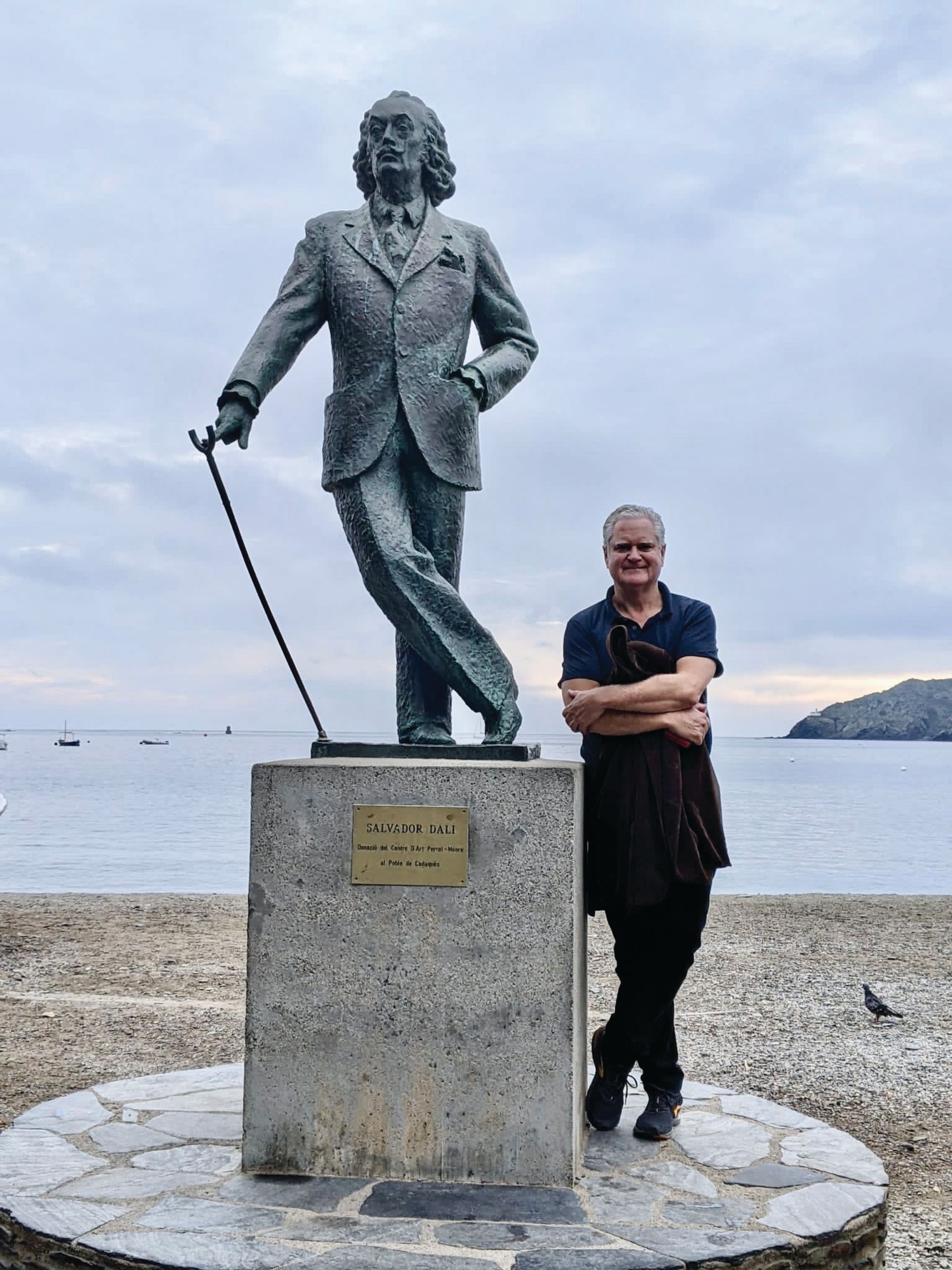Art theft, as we know, is big business, and it’s worth over £5billion a year, putting it among the top international crimes after drug trafficking, money laundering money and arms trafficking. But stolen art used as collateral or bartered as valuable merchandise is rarely an isolated case. Something else is usually involved, be it drugs, weapons, money laundering, sex work, or even human trafficking.
The Barcelona Connection is the first in a series of crime thrillers I’m writing, set in the art world and with Benjamin Blake as the central character called in to investigate a crime scene as a work of art. Each book is planned to focus on a different artist, painting and city, and each artwork connects to a parallel, real crime – and I have Dalí to thank for launching me on this book’s journey of double imagery and mistaken identity.
There are key moments that relate to these twin themes, and I use the The Hallucinogenic Toreador (1968-70, above) as a “mirror image” of discoveries made during the investigation of a murder and kidnapping.
Hours after being sent to Barcelona to authenticate a possible study for Dalí Toreador, Blake finds himself stranded without his phone at a gas station alongside a bloodied corpse in the early morning. Mixing the real and the surreal, he becomes the prime suspect in a politically motivated kidnapping and murder, and he has 36 hours to clear his name and recover the painting.

Author Tim Parfitt with a statue of Salvador Dalí
Blake not only believes that crime scene investigation is an art and not a science, but that every crime scene can be considered a work of art. The forensic pathologist becomes the connoisseur, drawing conclusions from overlooked details, clues or traces.
I have chosen The Hallucinogenic Toreador, with its dual image of a bullfighter who is “invisible” until you see that repeated depictions of the Venus de Milo also depict her facial features, as it is a mirror image of the “invisible” victim or disappeared from my history. I learned of Dalí’s obsession with the painting’s focal point through my conversations and correspondence with Joan Kropf, the former chief curator of the Salvador Dalí Museum in Florida. The Dalí Foundation in Figueres also helped me in my research, and additional information was provided by the Museu Nacional d’Art de Catalunya, in particular on the forensic examination of the paintings.
Dali describes the Toreador as “all Dalí in a single painting”. Dalí had a brother, also called Salvador, who died before the artist was born. The ‘invisible’ bullfighter, about to die, represents his dead older brother. Dalí’s parents liked to think of him as a reincarnation of his brother, seeing a close spiritual and physical resemblance between their two sons. To be considered, in the eyes of others, as someone else – and someone who was dead – was an issue that exerted a strong influence on the formation of Dalí’s character. This sense of “misidentity” is an essential ingredient of the book.
• Tim Parfitt, The Barcelona ConnectionMaravilla Press, 502pp, £10.99 (pb)
